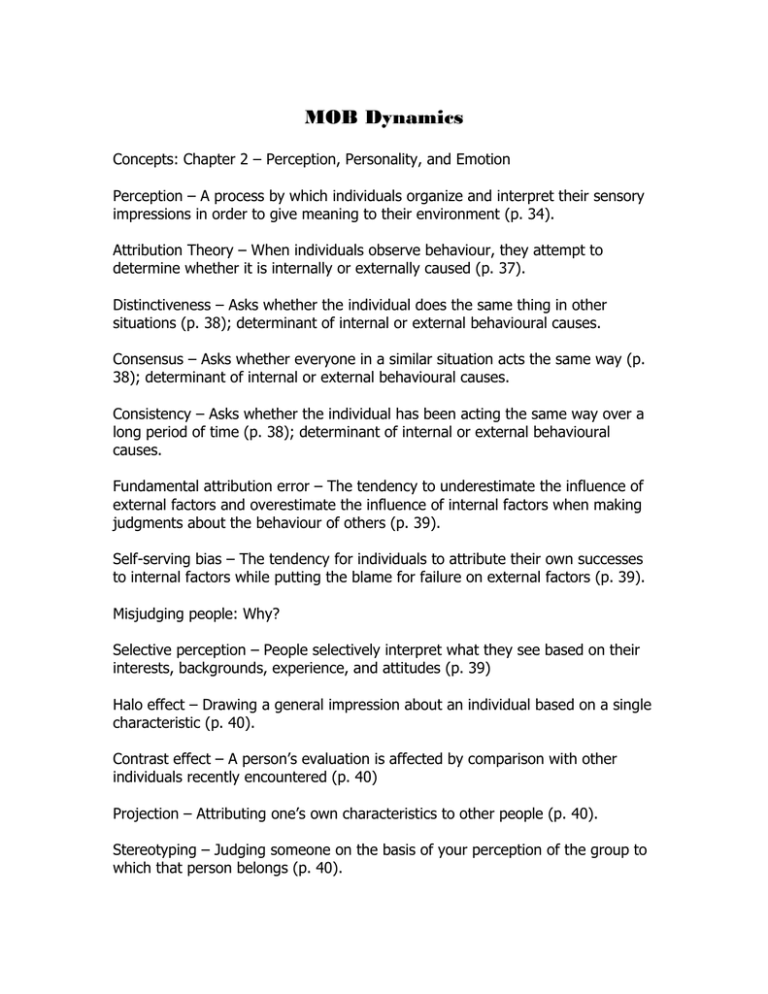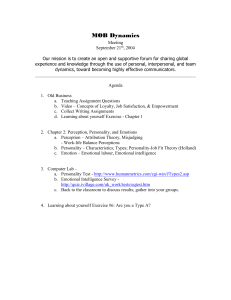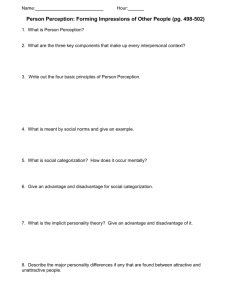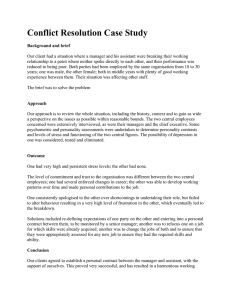MOB Dynamics
advertisement

MOB Dynamics Concepts: Chapter 2 – Perception, Personality, and Emotion Perception – A process by which individuals organize and interpret their sensory impressions in order to give meaning to their environment (p. 34). Attribution Theory – When individuals observe behaviour, they attempt to determine whether it is internally or externally caused (p. 37). Distinctiveness – Asks whether the individual does the same thing in other situations (p. 38); determinant of internal or external behavioural causes. Consensus – Asks whether everyone in a similar situation acts the same way (p. 38); determinant of internal or external behavioural causes. Consistency – Asks whether the individual has been acting the same way over a long period of time (p. 38); determinant of internal or external behavioural causes. Fundamental attribution error – The tendency to underestimate the influence of external factors and overestimate the influence of internal factors when making judgments about the behaviour of others (p. 39). Self-serving bias – The tendency for individuals to attribute their own successes to internal factors while putting the blame for failure on external factors (p. 39). Misjudging people: Why? Selective perception – People selectively interpret what they see based on their interests, backgrounds, experience, and attitudes (p. 39) Halo effect – Drawing a general impression about an individual based on a single characteristic (p. 40). Contrast effect – A person’s evaluation is affected by comparison with other individuals recently encountered (p. 40) Projection – Attributing one’s own characteristics to other people (p. 40). Stereotyping – Judging someone on the basis of your perception of the group to which that person belongs (p. 40). Personality – The stable patterns of behaviour and consistent internal states that determine how an individual reacts to and interacts with others (p. 43) Locus of Control – The degree to which people believe they are in control of their own fate (p.48) Machiavellianism – Degree to which an individual is pragmatic, maintains emotional distance, and believes that ends can justify means (p. 49). Self-esteem – Individuals’ degree of liking or disliking themselves (p. 49). Personality-Job Fit Theory – Identifies six personality types and proposes that the fit between personality type and occupational environment determines satisfaction and turnover (p. 54); Personality types – realistic; investigative; social; conventional; enterprising; artistic (p. 55) Emotion – Intense feelings that are directed at someone or something (p. 57) Emotional labour – When an employee expresses organizationally desired [appropriate] emotions during interpersonal interactions (p. 57). Emotional Intelligence – An assortment of noncognitive skills, capabilities, and competencies that influence a person’s ability to succeed in coping with environmental demands and pressures (p. 60).




